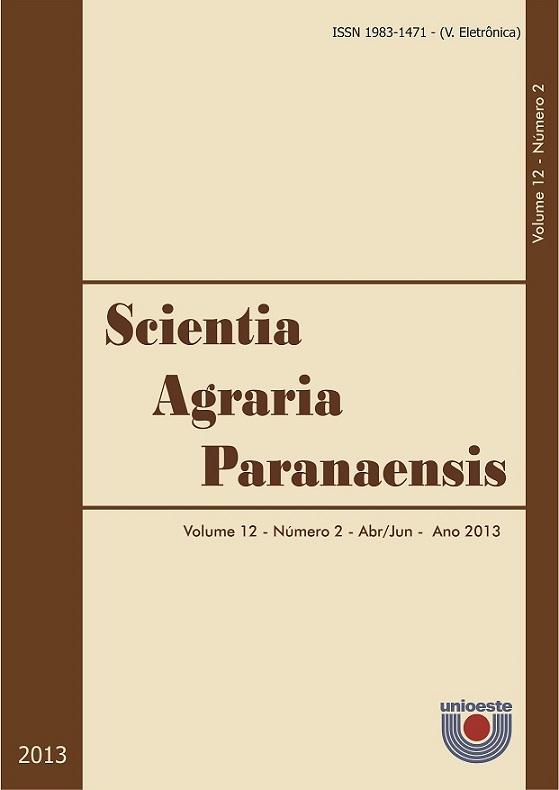Availability of nutrients and potentially toxic elements in hyssop plants grown in sandy soil with mineral and organic fertilization
DOI:
https://doi.org/10.18188/sap.v12i2.6451Keywords:
Dejeto suíno, minerais, metal pesado.Abstract
The technologies developed for agricultural production in recent years have faced constant pressure between the increase of production with a sustainable development. Co-products such as swine waste are generally used for soils fertilization. The use of this waste has presented great acceptance by farmers, being used mainly in crops and pastures. However, the inappropriate use of those wastes, results in toxicity for the plant. Nowadays, the scientific study with medicinal plants present itself in constant growth, once that the population demonstrates a tendency for natural or herbal treatments. Consequently, the market for medicinal plants tends to improve their production technologies, looking for higher productions, with high quality and sustainability. The hyssop (Hyssopus officinalis), is a shrub originated from Europe, its leaves, flowers and stems are used as pharmaceutical raw materials, with antifungal, antibacterial, antimicrobial, antitussive and expectorant proprieties, beyond antispasmodic effects. The objective of this study was to determine the levels of minerals and the heavy metals in hyssop plants subjected to different treatments with organic and mineral fertilization on sandy soil. The treatments were arranged in factorial scheme (2x3), in complete randomized design (CRD), with 2 types of fertilizers (organic and mineral) and 3 doses of fertilization (without fertilization, the recommended dose and the double recommended dose), totalizing 6 treatments with 4 replications. The results demonstrate that in sandy soils, the organic fertilization provides higher levels of P, Ca and Zn, while cultivation with mineral fertilizer promoted the accumulation of K, Fe and Mn in plant tissue.Downloads
Published
01-07-2013
How to Cite
GONÇALVES JR., A. C.; CARVALHO, E. A. de; COELHO, G. F.; SCHWANTES, D.; NACKE, H.; MORAES, A. J. de. Availability of nutrients and potentially toxic elements in hyssop plants grown in sandy soil with mineral and organic fertilization. Scientia Agraria Paranaensis, [S. l.], v. 12, n. 2, p. 105–114, 2013. DOI: 10.18188/sap.v12i2.6451. Disponível em: https://e-revista.unioeste.br/index.php/scientiaagraria/article/view/6451. Acesso em: 1 jun. 2025.
Issue
Section
Scientific Article
License
Aviso de Direito Autoral Creative Commons
Política para Periódicos de Acesso Livre
Autores que publicam nesta revista concordam com os seguintes termos:
1. Autores mantém os direitos autorais e concedem à revista o direito de primeira publicação, com o trabalho simultaneamente licenciado sob a Licença Creative Commons Attribution que permite o compartilhamento do trabalho com reconhecimento da autoria e publicação inicial nesta revista.2. Autores têm autorização para assumir contratos adicionais separadamente, para distribuição não-exclusiva da versão do trabalho publicada nesta revista (ex.: publicar em repositório institucional ou como capítulo de livro), com reconhecimento de autoria e publicação inicial nesta revista.
3. Autores têm permissão e são estimulados a publicar e distribuir seu trabalho online (ex.: em repositórios institucionais ou na sua página pessoal) a qualquer ponto antes ou durante o processo editorial, já que isso pode gerar alterações produtivas, bem como aumentar o impacto e a citação do trabalho publicado (Veja O Efeito do Acesso Livre).
Licença Creative Commons
Esta obra está licenciada com uma Licença Creative Commons Atribuição-NãoComercial-CompartilhaIgual 4.0 Internacional, o que permite compartilhar, copiar, distribuir, exibir, reproduzir, a totalidade ou partes desde que não tenha objetivo comercial e sejam citados os autores e a fonte.


